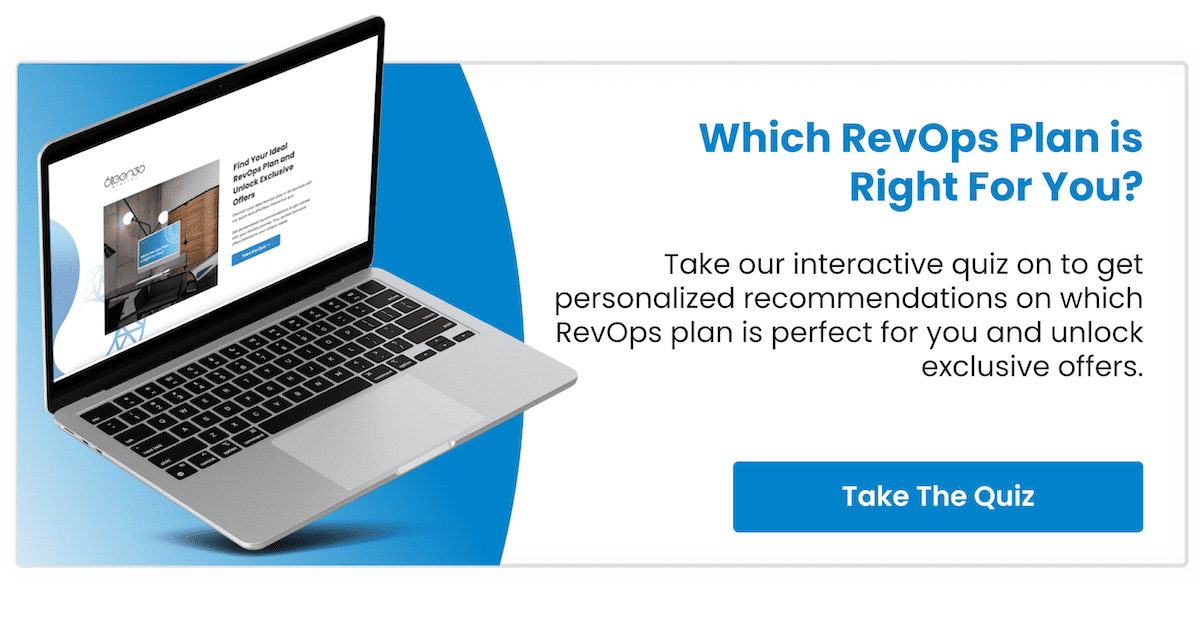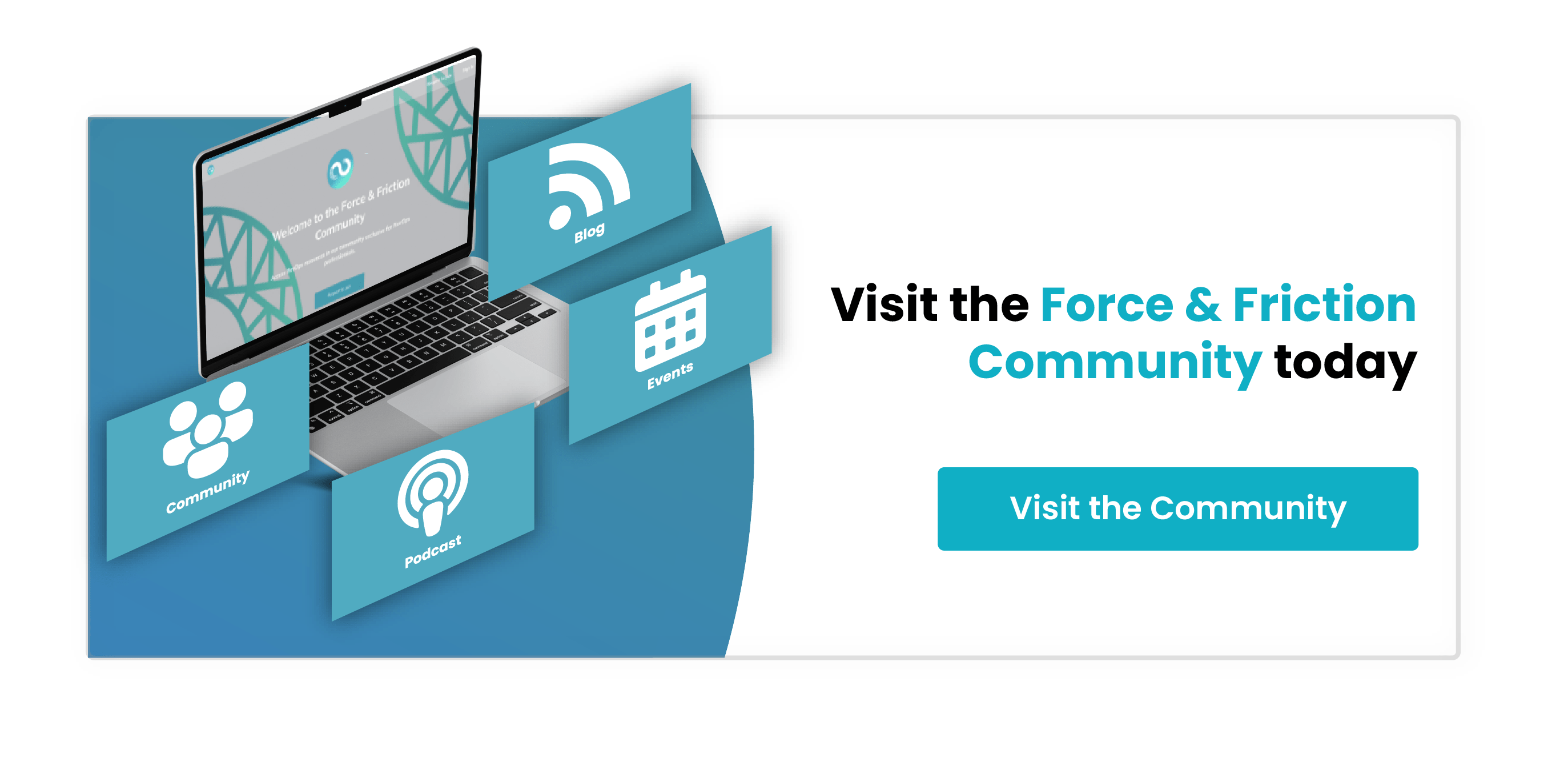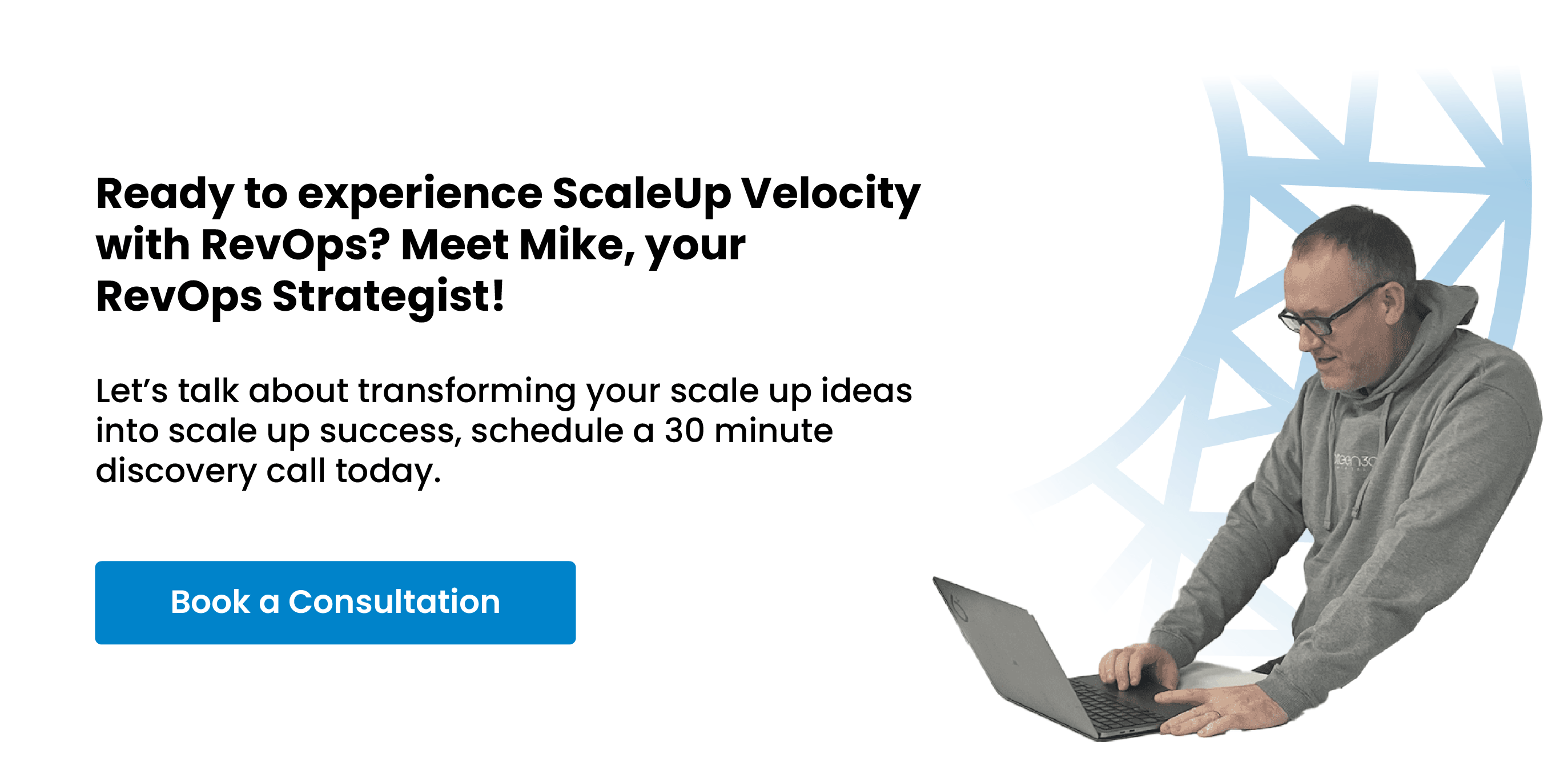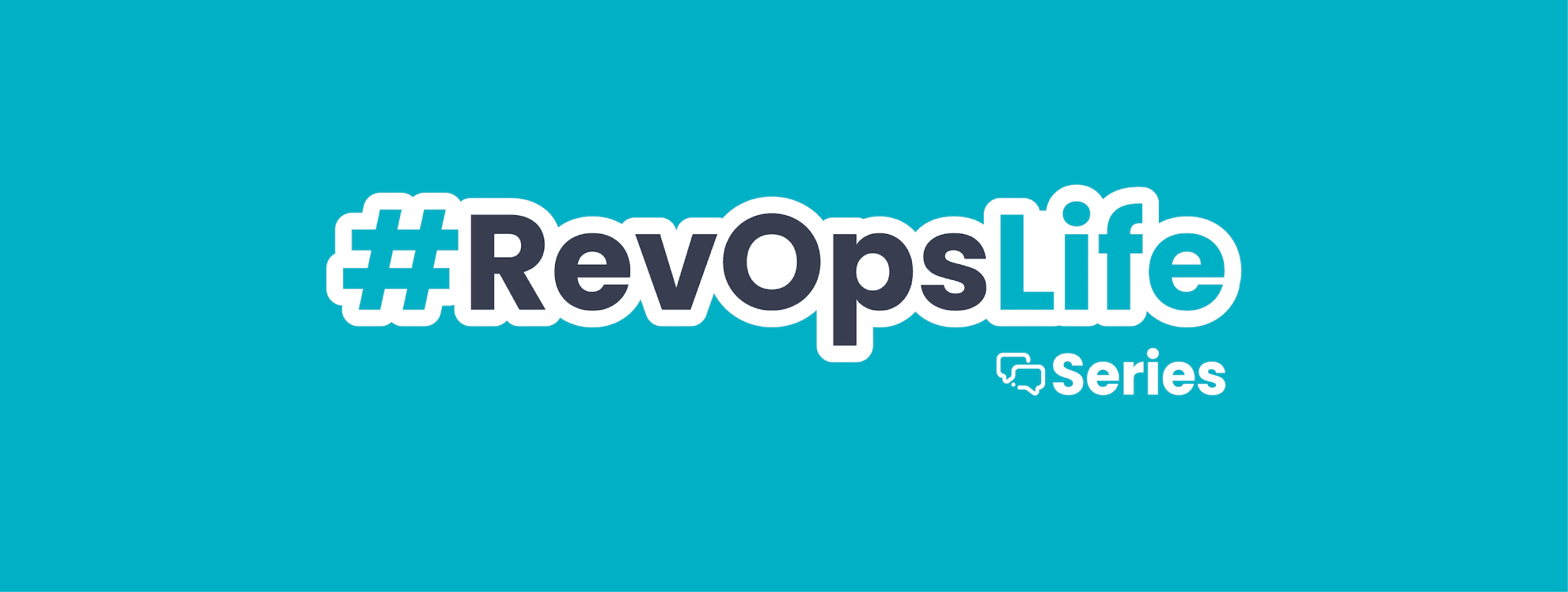
Crafting a Tailored Buyer Journey: The Key to Effective RevOps Strategies
When you see the marketing campaigns that ‘Just Work’ you can see how they connect with the audience, it’s as if they are having the same conversation that’s happening right now in their prospect's brain… It's remarkable when it's done right.
So how do you approach tapping into the mind of your ideal buyer?
In this latest #RevOpsLife article I break down the approach we take when crafting buyers' journeys inside your well-executed Revenue Operations (RevOps) strategy.
One critical aspect of any successful RevOps plan is the ability to distinguish between the buyer and customer journeys and address each one individually.
By identifying the unique stages of the buyer's journey, we can create a more targeted and effective marketing approach that speaks to your potential customers' needs and desires.
The Three Stages of the Buyer's Journey to the point of purchase:
-
Awareness
-
Consideration
-
Decision
To craft a buyer journey that resonates with each of your personas, you must first empathize with their situation and understand their experiences.
At 6teen30 Digital, we leverage our GamePlan Workshops to help clients achieve this understanding of each persona and product or service they offer.
1: Awareness Stage:
Uncovering Feelings and Identifying Key Marketing Content
-
Start by asking these questions about your target audience's feelings:
-
How are they feeling (seeking an aspirational solution or trying to solve a problem)?
-
What brought them here?
-
List the top 5 feelings they have, narrow them down to the top 3, and then identify the #1 feeling.
-
Discuss with your team why this is the #1 feeling, ensuring that you've accurately pinpointed the primary issue.
-
Now that you've identified the most pressing concern, ask yourself:
-
What would be the #1 marketing content piece to address and overcome this feeling to build trust?
This process should reveal your main awareness marketing campaign piece.
Continuing the Process: Delving into Actions, Research, and Action Drivers
Repeat the steps above, focusing on other elements of the awareness stage, such as:
-
What actions are they taking:
At this point of first awareness and feeling they need to do something to address the situation -
What research they are undertaking:
And don't just say Google search, think wider and challenge your team to identify what they are typing into Google, you can use keyword research tools like SEMRush etc to achieve this or even Google insights. -
What are the action drivers:
This is what will move them to the next stage of their journey, to highlight, and simplify this the action driver forms the first draft to be your call to action in your marketing funnel. -
Existing friction points:
Within this stage of the buyer's journey, challenge your team to examine if you are making this easy or hard for your customers, if you have unnecessary friction at this early stage they will most likely seek out an alternative solution.
By thoroughly examining each aspect of the awareness stage, you can start to create the first foundational stone towards a cohesive marketing strategy that addresses your potential customers' feelings, actions, research, and action drivers, effectively guiding them through the buyer's journey to the next stage of consideration.
2: Consideration Stage:
The same focus needs to be applied when navigating the Consideration Stage: Your challenge now is to guide your prospects towards the ideal solution with you front of mind as their trusted guide.
Now that we have explored the Awareness Stage, where prospects identify their aspirations or pains and the need for a solution, it's time to delve into the Consideration Stage.
In this phase, prospects begin to evaluate which product or service can best help them meet their aspirations or alleviate their pain points.
Remember they WILL be looking at your competitors or other solutions, don’t make the mistake of thinking just because you successfully moved them to this second consideration stage you have the job done, far from it.
By following the same process we used for the Awareness Stage, here we explore the questions and validation steps necessary to create an engaging marketing strategy for the Consideration Stage.
Consideration Stage: Addressing Needs, Comparisons, and Decision Factors
-
Start by asking these questions about your target audience's needs and concerns:
-
How are they feeling about the features or benefits that are most important to them? Do they have comparison fatigue, is there any uncertainty? Are they suffering from analysis paralysis?
-
How do they compare different products or services?
-
What factors will influence their decision-making process?
-
Like in the awareness stage list the top 5 feelings, needs or concerns they have, narrow them down to the top 3, and then identify the #1 feeling, need or concern.
-
Discuss with your team why this is the #1 feeling, need or concern, ensuring that you've accurately pinpointed the primary factor that will guide their decision-making.
-
Now that you've identified the most crucial feeling, need or concern, ask yourself:
-
What would be the #1 marketing content piece to address and overcome this concern to build trust and demonstrate your product or service's value?
This process should reveal your main consideration stage marketing campaign piece.
Continuing the Process: Analyzing Comparisons, Decision Factors, and Trust-Building
Repeat the steps above, focusing on other elements of the Consideration Stage, such as:
-
What is their product or service comparison process?:
You are not the only option, you may have led them here, and served them well so far, but are you geared up to best help them compare their options.
-
What are the key decision factors?:
Does this price, quality, brand reputation, etc. take time to understand what is important to them? -
What trust-building strategies can you employ?:
You have to establish your business as a reliable choice, the trusted guide they will follow through to the decision stage. -
Identify any existing friction points:
Within this consideration stage of the buyer's journey, what would slow them down or drive them to your competitors?
By thoroughly examining each aspect of the Consideration Stage, you can further build out your marketing strategy and create cohesive marketing content for this crucial stage, are they excited about your product or solution?
Does it address your potential customers' needs, concerns, and decision-making factors, effectively guiding them towards choosing your product or service?
3: Decision Stage:
Continuing with the same approach as the awareness and consideration stages, at this decision point, remember that your prospects have identified their aspirations or pains, sought a solution, and considered various products or services, ultimately shortlisting your offering.
In the Decision Stage, your prospects are ready to choose a company to deliver the solution they need.
It’s time to become the master of the decision stage, closing the deal and securing new customers.
Your focus has to be crystal clear here to ensure you are addressing the final hurdles and ensuring your prospects choose your company to deliver their ideal solution.
Decision Stage: Addressing Concerns, Comparisons, and Final Decision Factors
-
Start by asking these questions about your target audience's final concerns and decision factors:
-
How are they feeling? And specifically what remaining concerns or questions do they have?
-
How have they positioned you against the alternative different providers of the shortlisted solution?
-
What factors will ultimately influence their choice of a company to deliver the solution?
-
List the top 5 feelings, concerns or factors they have, narrow them down to the top 3, and then identify the #1 concern or factor.
-
Discuss with your team why this is the #1 concern or factor, ensuring that you've accurately pinpointed the primary aspect that will guide their final decision.
-
Now that you've identified the most crucial concern or factor, ask yourself:
-
What would be the #1 marketing or sales enablement content piece or tactic to address and overcome this concern, demonstrating why your company is the best choice to deliver the solution?
This process should reveal your main Decision Stage marketing and sales enablement campaign piece.
Continuing the Process: Examining Comparisons, Final Decision Factors, and Closing Strategies
Repeat the steps above, focusing on other elements of the Decision Stage, such as:
-
Provider comparisons:
Prospects will inevitably compare your company to other providers offering similar solutions. It's essential to understand how prospects evaluate competitors and showcase your unique value proposition to stand out among the rest.
-
Key decision factors:
Is this price, support, implementation time to value, reliability, warranty etc
-
Help To Buy strategies:
Previously known as closing strategies, remember nobody likes to be ‘closed’ but they love being helped in the buying process and you can better increase your chances of securing the prospect's commitment -
Existing friction points:
You just absolutely have to remove the friction at this stage, and make it easy for them to buy.
By thoroughly examining each aspect of the decision stage, you can create a plan to enable your team, delight your prospects and secure their business by addressing, supporting and overcoming our potential customers' concerns, comparisons, and final decision factors, effectively guiding them towards choosing your company to deliver their ideal solution.
Conclusion:
Your buyer's journey is an integral part of an effective RevOps strategy.
By thoroughly understanding and addressing the unique needs and concerns of potential customers at each stage – Awareness, Consideration, and Decision – you can create a tailored marketing approach that resonates with your target audience and set them up for success.
This targeted strategy not only results in better conversion rates but also fosters trust between your business and potential customers.
To learn more about how 6teen30 Digital's GamePlan RevOps strategy Workshops can help you navigate the buyer's journey and unlock your company's full potential, book a consultation with our experienced team of strategists.








%20-%20Teal.png?width=500&height=130&name=Force%20%26%20Friction%20-%20Branding%20-%20Logo%20(White)%20-%20Teal.png)